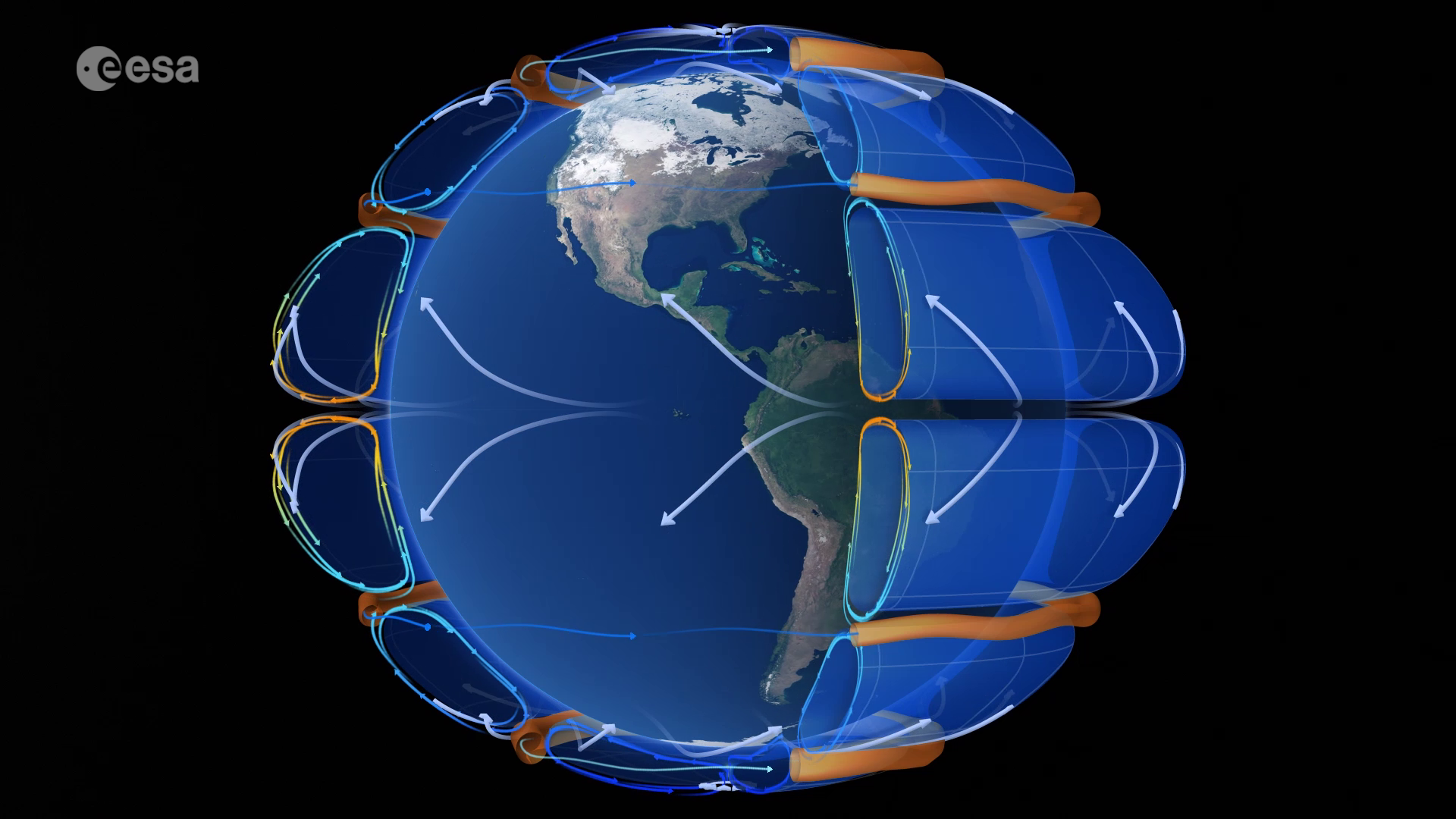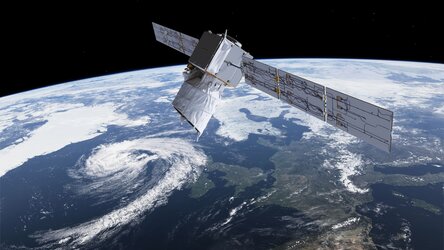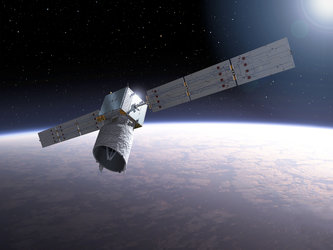Earth's winds
Highlighted by the World Meteorological Organization, the lack of direct global wind measurements is one of the major deficits in the Global Observing System. This lack of measurements limits our understanding and the prediction of weather and climate. Aeolus demonstrated that its novel laser technology could play a key role in the quest to better understand the workings of our atmosphere, and improve weather forecasting.
The wind forms the basis of atmospheric circulation, which governs the weather and climate.
Some areas of Earth receive more heat from the Sun than other areas. This leads to differences in air temperature, density and pressure, which in turn, cause the air to move – creating wind.
Wind transports heat away from equatorial regions towards the poles, and returns cooler air to the Tropics.


Access the video
Rising warm air is associated with areas of low surface-pressure called cyclones, while areas of high surface-pressure, known as anticyclones, are associated with subsiding air. These pressure differences are balanced by air motion – wind.
Since Earth rotates and is spherical, winds to not move directly from high to low pressure areas. The greater the difference in air pressure between two regions, the stronger the wind will be. The wind continues to blow until the pressure difference changes.
The Coriolis force explains why winds generally blow perpendicular to the direction of the pressure difference.
The force acts at right angles to the direction of motion, so as to cause deflection to the right in the northern hemisphere and to the left in the southern hemisphere. The force increases from zero at the equator to a maximum at the poles. Winds are therefore deflected relatively little at low latitudes and at higher latitudes the degree of deflection is much larger.

In order to improve numerical weather prediction so that we can benefit from better weather forecasting, there is an urgent need for detailed near-realtime observations of global wind-fields at all scales. This is something meteorologists have needed for some time.
Aeolus was developed to demonstrate how laser technology could fulfil this need. The mission generated about a 100 wind profiles an hour, which gave meteorologists better information to predict the weather.
Aeolus provided wind profiles for the entire planet, including remote areas lacking ground-based weather stations.
It was the first space mission to acquire profiles of the wind on a global scale and paved the way for a future operational mission – Aeolus-2.
Back to Aeolus homepage |













